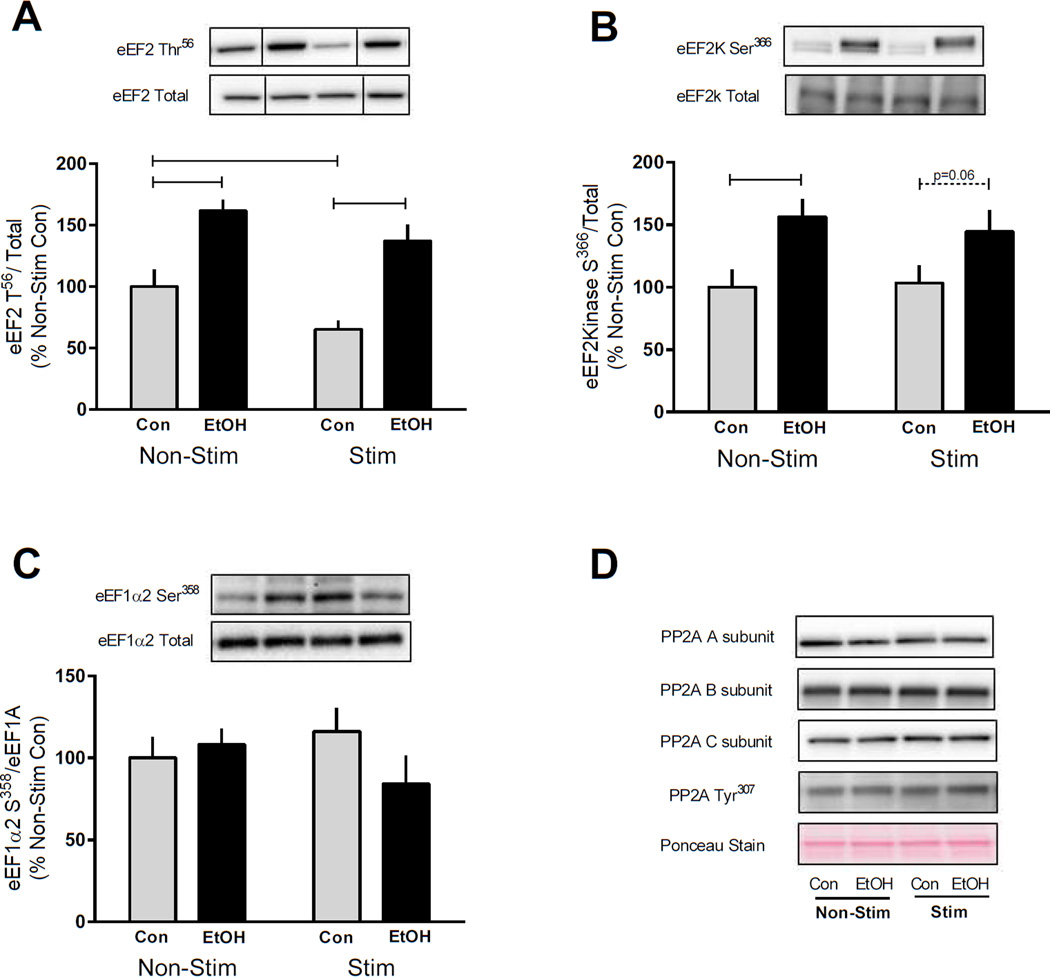Figure 5.
EtOH increases phosphorylation of eukaryotic elongation factors (eEF) to inhibit protein elongation. Four hours after cessation of muscle contraction and 2 h following EtOH (3 g/kg) intoxication eEF2K Ser366 (A), eEF2Thr56 (B) and eEF1α2 Ser358 (C) were assessed in the gastrocnemius/plantaris muscle complex. Bar graphs represent quantification of Western blot images normalized to the total amount of the respective protein with the control non-contracted value set to 100%. Black bars correspond to alcohol (EtOH) treated mice (n=10) and light bars represent control (Con) mice (n=9). ‘Non-Stim’ indicates control condition, while ‘Stim’ indicates muscle which underwent electrically stimulated muscle contraction. Horizontal bars indicate statistical differences between groups (P<0.05). Values are expressed as means + SE. Expression of PP2A including the A, B and C subunit as well as phosphorylation on Tyr307 was also measured and representative images are shown (D). Ponceau S Stain was used as a loading control. No statistically significant differences were detected between the groups for PP2A signaling in the gastrocnemius/plantaris muscle complex at this time point.

